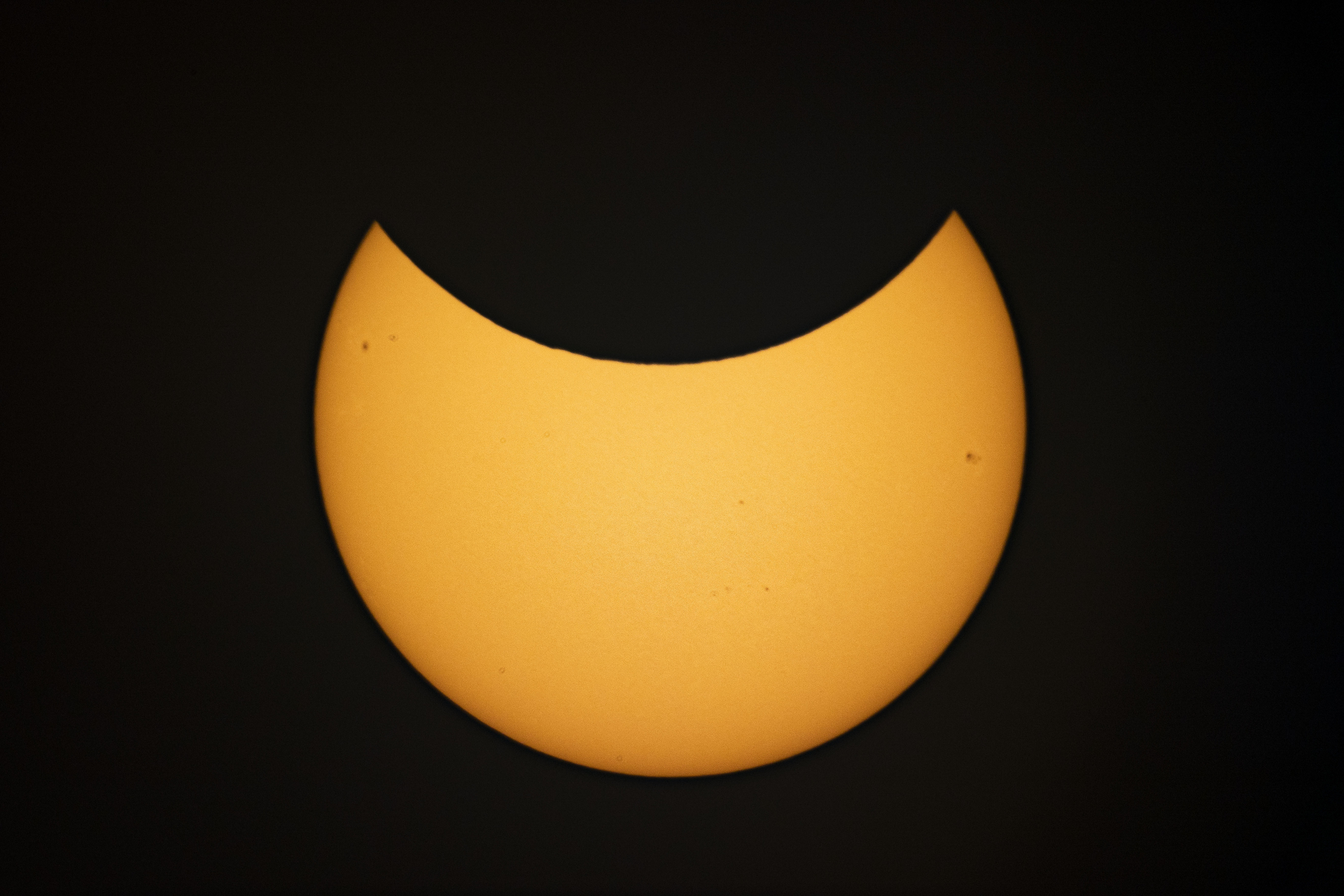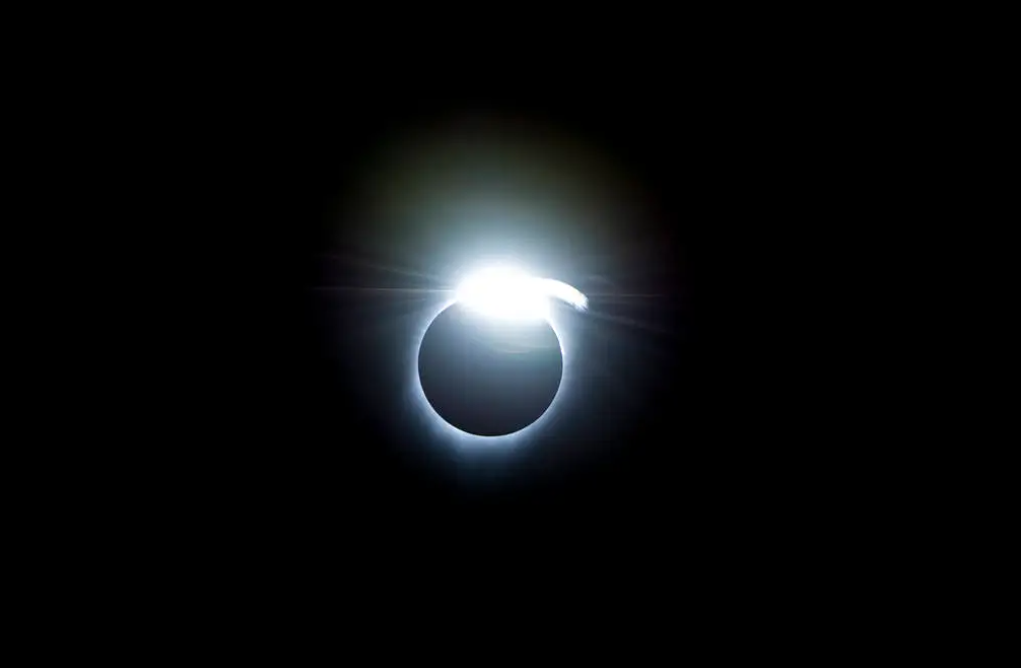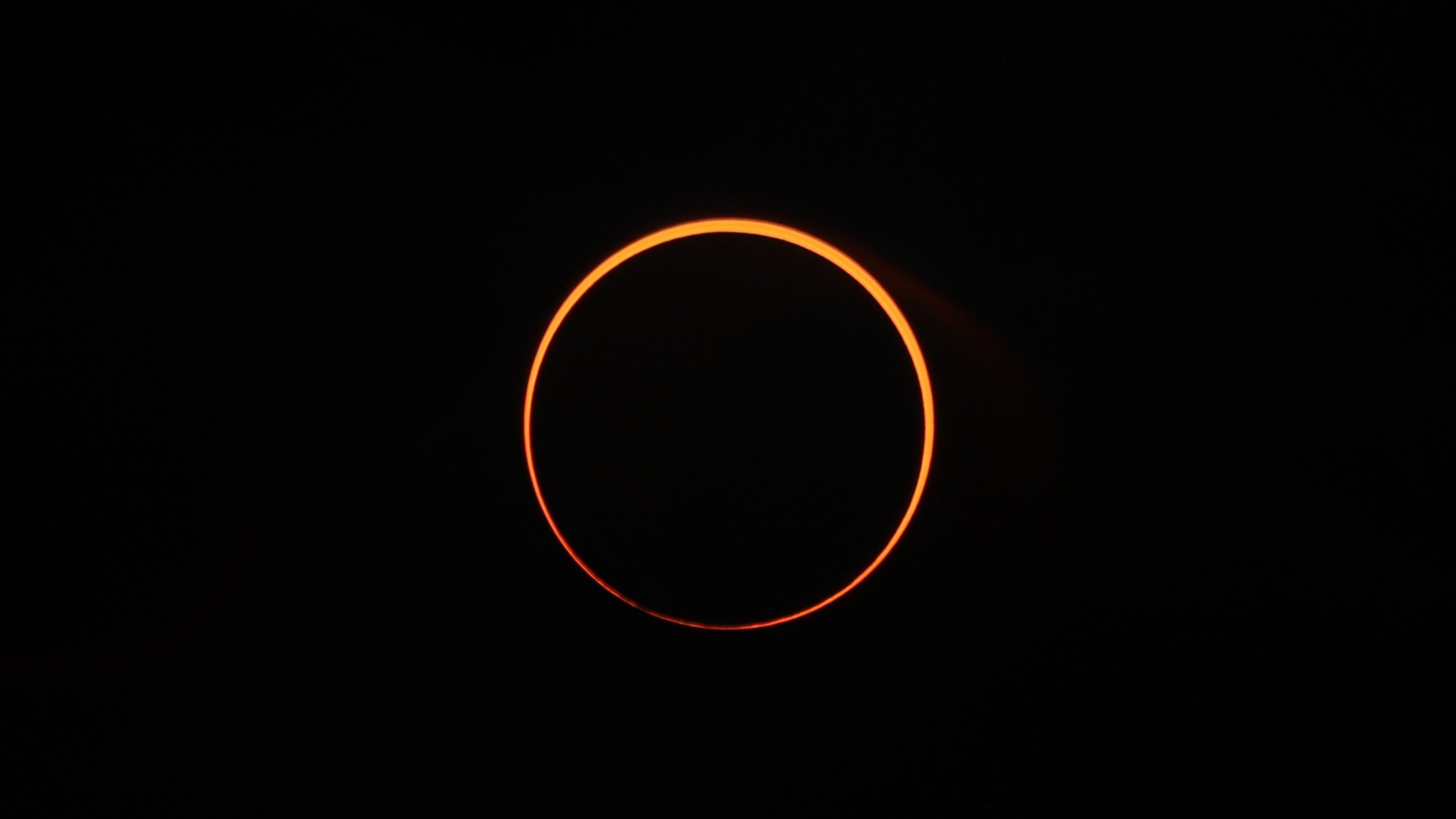The 5 stages of the 2024 total solar eclipse explained for April 8
On Monday (April 8), a total solar eclipse will sweep across the Americas. Here's how it will play out.
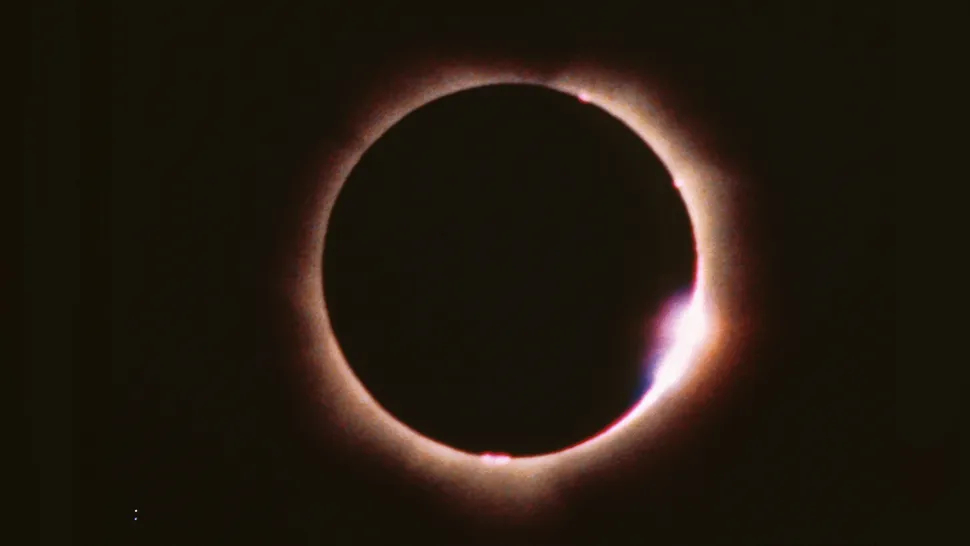
On Monday, April 8, the 2024 total solar eclipse will sweep through the sky over North America.
While all of North America and Central America will experience at least a partial solar eclipse, those within a path with a width of approximately 115 miles (185 kilometers) passing over 15 U.S. States. Mexico, and Canada will also witness a totality as the moon entirely covers the disk of the sun.
You can watch the total solar eclipse live on Space.com. You can also keep up with all the eclipse-related action with our total solar eclipse 2024 live updates blog.
Don't be in the dark about the 2024 total eclipse
There are three major types of solar eclipse. A total solar eclipse like that on April 8 occurs when the moon is relatively close to Earth and blocks the entire disk of the sun.
Because the moon's orbit around our planet is an ellipse, sometimes it is further away and thus appears smaller. An eclipse at these times sees the moon only an obscure part of the solar disk, with the sun appearing as a glowing ring of fire. These events are called annular solar eclipses, and the last one seen over the U.S. occurred on Oct. 14, 2023.
Finally, a partial solar eclipse is an event that happens when the Earth, moon, and sun are not perfectly aligned, resulting in the lunar disk only covering part of our star, making the sun appear as if a bite has been taken out of it. Partial eclipses also happen at the beginning and ending stages of total and annular eclipses.
On April 8, 2024, the moon will be in its new moon phase, and it will look relatively large, meaning it is capable of covering 100% of the sun's disk as viewed from the narrow path of totality. The fraction of the diameter of the sun covered by the moon is known as the magnitude of a solar eclipse. On April 8, 2024, this value will be 1.0566, according to EclipseWise.com, slightly more than total coverage.
Breaking space news, the latest updates on rocket launches, skywatching events and more!
NASA has released an interactive map of the total eclipse, which space enthusiasts can use to track the totality as it drifts across the globe. However, location won't be the only factor affecting the appearance of the total solar eclipse on Monday. The eclipse will pass through 5 distinct stages, with each of these phases occurring at different times across different locations.
What are the stages of the annular solar eclipse?
Stage 1: First contact
In the initial stage of the eclipse, the moon will begin to pass in front of the sun, kick-starting a partial solar eclipse. During this phase, the darkened lunar disk of the moon will make the sun appear as if a bite has been taken out of its illuminated face. This "bite" will get bigger and bigger as the totality approaches.
During the first stage of the total solar eclipse, some onlookers will be able to see rapidly moving, long, dark bands called "shadow bands" on the sides of buildings or the ground. Bailey's beads, caused by light streaming through the valleys on the horizon of the moon, may also be visible at the moon's edges during this initial stage. These phenomena repeat during the second partial eclipse that occurs after totality.
On April 8, this stage of the partial eclipse will first be seen near Pu‘uali‘i, Hawaii, at 6:27 a.m. local time (12:27 p.m. EDT, 1627 GMT).
Stage 2: Second contact
First contact will last for between 70 and 80 minutes, and its conclusion will be marked by a single bright spot, or "diamond ring," appearing at the edge of the moon. This marks the second contact stage and heralds the oncoming totality.
On April 8, the total solar eclipse will make landfall at Mazatlán, Sinaloa, Mexico, at 9:51 a.m. local time (12:51 p.m. EDT, 16:51 GMT).
Stage 3: Totality
Stage 3 and the mid-point of the total solar eclipse is the totality. At this point, the moon completely covers the solar disk. During the totality of the outer atmosphere of the sun, the corona may become visible as white streamers at the edge of the moon. This region is usually washed out by bright light from the solar surface, the photosphere. The inner atmosphere of the sun, the chromosphere, may be visible as a wispy aura around the edge of the moon.
The totality may also make stars and planets visible in the darkened sky that are usually not visible from America during daylight hours.
On April 8, the first location to experience totality will be Mazatlán, Sinaloa, Mexico at 11:07 a.m. local time (2:07 p.m. EDT, 1807 GMT). The first location to experience totality in the U.S. will be Near Florentino Ramos Colonia, Texas, at 1:27 p.m. local time (2:27 p.m. EDT, 1827 GMT).
The duration of the totality depends on the path from which the eclipse is viewed. In Mexico, totality will last for 40 minutes and 43 seconds. Skywatchers in the U.S. will collectively experience totality for 67 minutes and 58 seconds. Onlookers in Canada will experience the totality of the solar eclipse for 34 minutes and 4 seconds.
Stage 4: Third contact
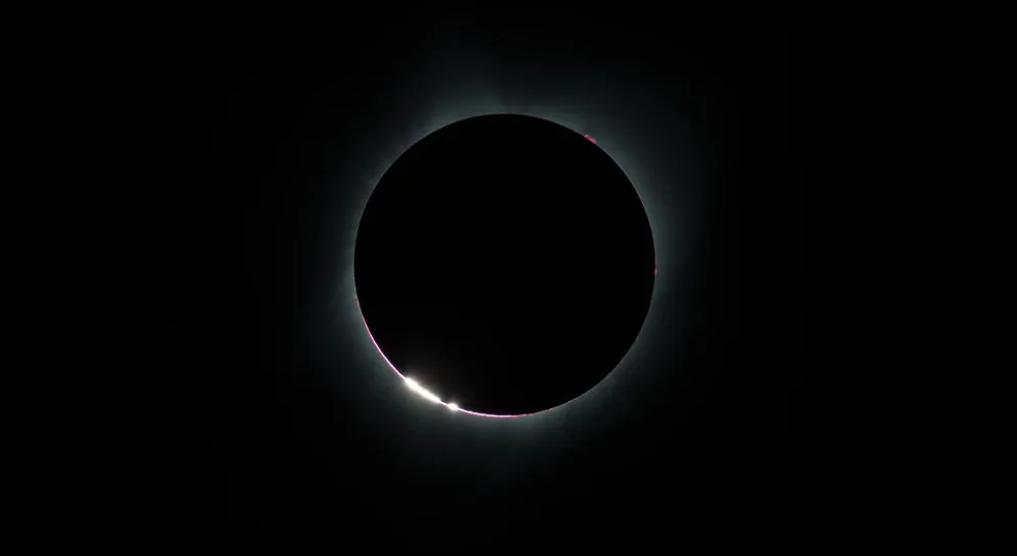
The fourth stage of the total solar eclipse, third contact, will see the moon start to move away from the disk of the sun, thus ending the totality and starting the second partial eclipse period. Brightening appears on the opposite side of the moon as it did during the second contact period.
At this time, skywatchers will get another chance to spot Baily's Beads along the edge of the moon and shadow bands on the buildings and ground around them, with this stage mirroring the second contact stage.
The total solar eclipse ends on the Atlantic coast at 5:16 p.m. local time (3:46 p.m. EDT, 1946 GMT).
Stage 5: Fourth contact
The fifth and final stage of the total solar eclipse. The moon moves away from the disk of the sun, meaning that at fourth contact, the moon is no longer even partially eclipsing the sun. At this point, 2024's total solar eclipse will be over.
On April 8, on the Atlantic coast of Newfoundland and Labrador, the partial eclipse phase ends at 6:18 p.m. local time (4:48 p.m. EDT, 2048 GMT).
If you intend to view any of these stages, the most important thing to consider is how to safely view it. Looking at the sun without adequate protection at any time is harmful to the eyes, so eclipse watchers should take precautions on Monday.
Sunglasses, regardless of how dark they are, can't protect the eyes from the effect of the sun, so specialized eclipse glasses made from safe solar filter materials will be needed. If skywatchers intend to watch the event with a telescope, special filters will be needed to make this a safe viewing experience.
Our how to observe the sun safely guide tells you everything you need to know about safe solar observations.
Following the 2024 total solar eclipse, skywatchers in the U.S. will next get the opportunity to see a total solar eclipse on March 30, 2033. The totality of this eclipse, which will last 2 minutes 37 seconds, will be visible in Alaska. Following this, on Aug. 23, 2044, a total solar eclipse will be visible from the U.S. states of Montana, South Dakota, and North Dakota, as well as from much of Canada.
Under a year later, on Aug.12, 2045, another total solar eclipse will sweep over the U.S., visible from California, Nevada, Utah, Colorado, New Mexico, Oklahoma, Kansas, Texas, Arkansas, Missouri, Mississippi, Louisiana, Alabama, Georgia, and Florida, as well as from the Caribbean, and South America.
Submit your photos! If you capture a photo of the April 8 total solar eclipse and would like to share it with Space.com's readers, send photos, videos, comments, and your name, location and content usage permission release to spacephotos@space.com.

Robert Lea is a science journalist in the U.K. whose articles have been published in Physics World, New Scientist, Astronomy Magazine, All About Space, Newsweek and ZME Science. He also writes about science communication for Elsevier and the European Journal of Physics. Rob holds a bachelor of science degree in physics and astronomy from the U.K.’s Open University. Follow him on Twitter @sciencef1rst.
